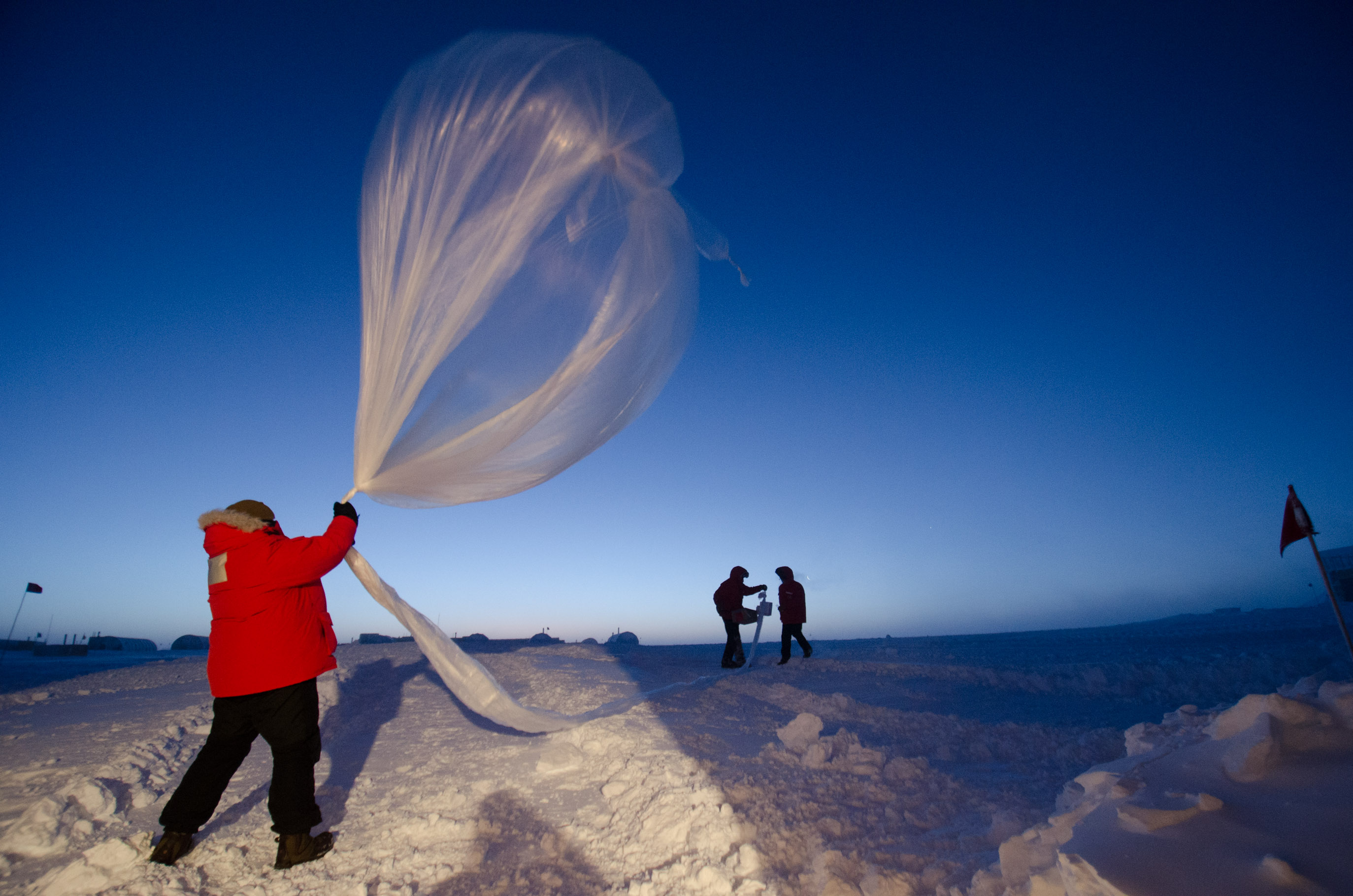Measuring Ozone in the Atmosphere

The majority of ozone in the atmosphere is found high above the surface in the “Ozone Layer.” Stratospheric ozone is typically measured as Total Column Ozone, a number representing all the ozone molecules located in a column of air extending from the surface all the way to the edge of the atmosphere. The higher the total column ozone number, the more molecules of ozone overhead, and the more protection from UV radiation.
Land based instruments such as the Dobson Spectrophotometer measure ozone by looking at sunlight and wavelengths specifically filtered by ozone in order to determine a Total Column Ozone value.
Satellite instruments can produce excellent maps of global ozone values, but their measurements have some limitations in vertical resolution and most satellites, even “polar orbiting” do not actually pass over the South Pole.

Ozonesonde Instrument
NOAA uses small electrochemical ozonesondes to measure ozone from the surface to over 100,000 feet. These instruments use a small electrical pump to bubble air through a solution of potassium iodide to convert ozone in to an electrical current that is measured once per second and then transmitted back to a ground station. This allows high resolution profiles of vertical ozone, allowing scientists and researchers to know exactly where ozone is distributed throughout the atmosphere. Also, unlike satellites and ground based instruments, ozonesondes do not require sunlight to measure ozone concentrations, making them the only instrument able to produce high quality measurements of the ozone layer during the darkness of winter and during the early formation of the annual ozone hole.

A six image sequence of a rubber balloon bursting at over 100,000 feet.
During the summer, NOAA scientists launch their ozonesondes on large rubber-latex balloons that rise to over 100,000 feet above the surface. The balloons stretch as the helium expands in the thinning atmosphere until they finally explode in a shred of biodegradable latex. A parachute slows the instrument on the way back down.

Launching a large plastic balloon from the South Pole.
As soon as the sun sets for 6 consecutive months of darkness during winter, they must switch to launching large plastic balloons. The plastic balloons do not stretch, but instead are filled with a small portion of helium which will expand to completely fill the balloon as the air pressure drops high in the atmosphere. Eventually, the balloon reaches its limit and bursts. Falling back to earth on a small parachute the instrument collects a second verification profile before gently landing back on the ground.

